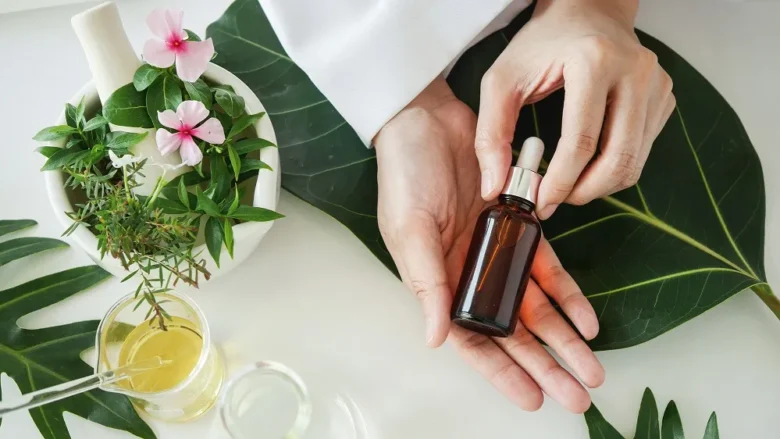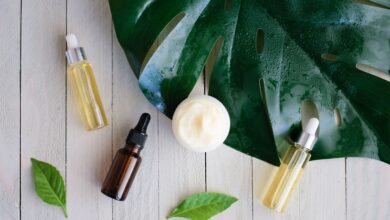From Concept to Creation: The Process of Private Labeling Skin Care Products

Have you ever thought about launching a new skincare brand targeting specific people’s needs? Do you know that many of us can’t really find over-the-counter products that treat particular skin conditions? Even though the market is oversaturated with skincare brands and products, sometimes we can’t really find what we exactly need. And surely that’s an issue.
According to RainshadowLabs, owning a custom private label skin care line helps you create a personalized approach to taking care of yourself. Surely it’s great to choose from different ingredients and see how they turn into the best product you’ve ever used.
What exactly mean to have such a collection?
Private labeling skin care involves developing a line of skincare products under a specific brand name. So, in order to create and sell, you don’t have to invest in an at-home lab. Private labeling brands usually do this for sale to consumers under some brand name.
These companies offer a lifelong collaboration with those who want to launch some skincare product, and even extend the idea to a complete collection. Usually, these people want the skincare products for themselves, but they successfully target a wider market too.
The process of creating a private-label skin care line typically involves the following steps:
1. Define the concept

The initial idea is a great starting point for defining what you want to accomplish. First, you’ll have to determine the type of skin care products you want to create and the target audience you want to appeal to. Maybe the process seems too obvious, but many fail to do this thing properly and fail before even starting.
For example, decide what skin type you’ll target initially, or which issue you want to resolve in the first place. That decision will help you create a distinction between yourself and other skincare brands on the market.
You should also consider your unique selling proposition, which is the thing that sets your products apart from others in the market – which tightly relates to what we already said.
2. Research and development
This phase is the most exciting one. With your private labeling brand, you can decide what ingredients to use and how to combine them into a functional product. You can start researching the market yourself, or they can stand behind you and support you through the whole process.
Conduct market research to determine what ingredients, formulations, and packaging are currently popular among the users. The cosmetic chemist or formulator will help you create your products.
If you plan on developing a range of skincare products, including cleansers, toners, moisturizers, serums, masks, and other specialty items, you’ll surely have to plan the whole thing out. Sometimes it seems like it takes a lot of time and effort, but don’t stick to only one product. A whole line is always a better idea, even though that means starting with a gentle cleanser and moisturizer only.
3. Design and branding

Having a formula is not enough when launching a new skincare line. As you suppose, branding is an essential part of it too. Once you have your formulations, you will need to focus on your brand identity and design packaging for your products. Additionally, think about how you want to market the new products. What resources do you already have to do that? What do you additionally need to create an even more targeted and successful campaign?
Branding is not only coming up with product labels, packaging boxes, and any promotional materials that will be used to market your products. You need to find a way and tell the people what you offer and why it’s beneficial for them to at least test some of the products.
4. Manufacturing
Once you are done with formulations and packaging, you will need to find a manufacturer to produce your products. We believe that you’ll work with the same private-label brand that helped you come up with the formulation. You only have to make sure the manufacturer is experienced in producing skincare products and can meet your production requirements.
5. Testing and certification
Before selling your products, you need to have them tested for safety and potential side effects. You may also need to obtain certification from regulatory bodies such as the FDA or the EU cosmetics regulation. It all depends on where are you based now, and where you plan on selling your products.
6. Launch and marketing

Once you’re done with the products and certifications, you’re ready to launch your skincare line. The next step is marketing the line, and testing how the sales perform in specific parts of the country. Also, you need to consider selling and shipping options too, because not every new brand can be available on the counter in drugstores immediately. This may involve creating a website, social media presence, and other marketing materials to promote your products.
You may need to learn more about managing an eCommerce website, and even keyword targeting, to successfully attract an audience to your website, and grab their interest with the content you write. Use social media to get a better insight into what’s happening, and see how people react and comment on your products. Make sure you have sample packages, so you can share them with your friends.
Conclusion
Overall, private labeling skin care production involves phases of research, development, and planning. Once you have the basic idea, you need to consult with experts and see how you can develop it into a new product or line. It is important to work with experienced professionals to ensure that your products are safe, effective, and appealing to your target audience.
As a final step, you need to test the products yourself and see how they work. Maybe some of them will need a reformulation before the official launch, and that’s an expected thing. Once done, you are ready to market your new cosmetic line and think about how to improve it in the future. Surely you’ll want to develop more products and focus on more specific conditions. And the hard work and effort will surely be worth all the investment in the end.



